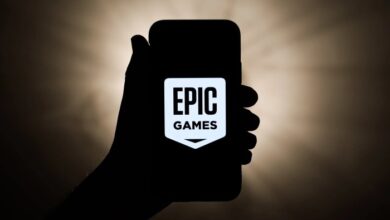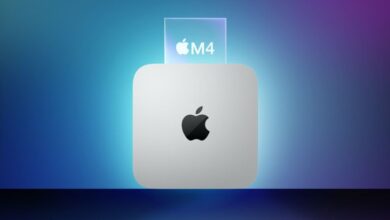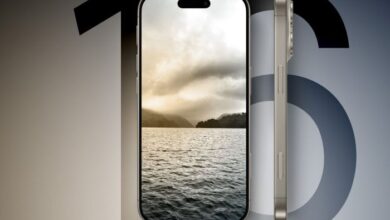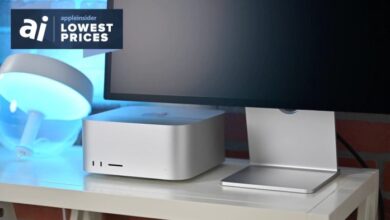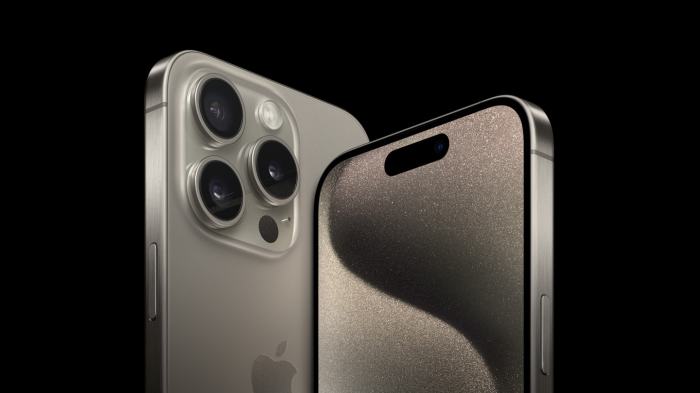
Apples Cheaper iPhone Storage: 1TB iPhone 16 Might Use QLC NAND
Apple reportedly considering a cheaper storage solution for larger iPhones 1TB iPhone 16 might have a QLC NAND SSD heres what that means: Rumors are swirling that Apple might be shifting gears with their storage strategy for the upcoming iPhone 16, potentially offering a 1TB storage option with a new type of flash memory called QLC NAND.
This could mean big changes for iPhone users, especially those who crave maximum storage capacity.
QLC NAND is a newer type of flash memory that offers a higher storage density at a lower cost compared to the TLC NAND currently used in iPhones. While this could mean a more affordable 1TB option, there are potential trade-offs in terms of performance and longevity.
Let’s delve into the details of QLC NAND and how it might impact the iPhone 16.
Apple’s Storage Strategy
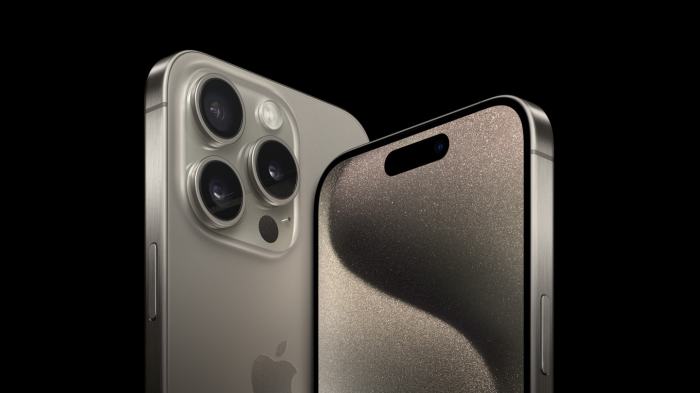
Apple has always been known for its premium pricing, and its storage options for iPhones have been no exception. Over the years, Apple has made several changes to its storage offerings, balancing the need for high-capacity options with the desire to keep costs in check.
This latest move to consider a cheaper storage solution for larger iPhone models, potentially using QLC NAND SSDs, suggests a shift in Apple’s storage strategy. This change could benefit both Apple and its customers.
The Evolution of iPhone Storage
Apple’s approach to iPhone storage has evolved significantly over the years. Early iPhones offered limited storage options, often topping out at 16GB or 32GB. As the iPhone gained popularity and users started storing more data, Apple gradually increased storage capacities.
Here’s a brief timeline of iPhone storage options:
- Early iPhones (2007-2010):Limited storage options, typically 16GB or 32GB.
- Mid-2010s:Increased storage options, with models offering up to 128GB and 256GB.
- Late 2010s:Introduction of 512GB and 1TB storage options, catering to users with demanding storage needs.
- Present:Continued focus on high-capacity options, but with potential for a cheaper 1TB option using QLC NAND SSDs.
Benefits of a Cheaper 1TB Option
Offering a cheaper 1TB storage option could provide several benefits for both Apple and its customers:
- Increased Accessibility:A more affordable 1TB option could make this storage capacity more accessible to a wider range of customers, particularly those who need a large storage capacity for their media, games, and apps.
- Competitive Advantage:By offering a cheaper 1TB option, Apple could potentially gain a competitive advantage over other smartphone manufacturers who offer similar storage capacities at higher prices.
- Enhanced Customer Satisfaction:Customers who value large storage capacities could be more satisfied with the iPhone if they can access a 1TB option at a more affordable price.
Impact on Pricing and Customer Demographics
The introduction of a cheaper 1TB storage option could significantly impact Apple’s pricing strategy and customer demographics. Here are some potential implications:
- Price Sensitivity:Apple could attract price-sensitive customers who were previously hesitant to purchase iPhones with large storage capacities due to their high cost.
- Shift in Demand:The availability of a cheaper 1TB option could potentially shift demand towards higher storage capacity models, potentially increasing the average selling price of iPhones.
- New Customer Segments:The move could attract new customer segments who were previously drawn to Android devices with larger storage capacities but at lower prices.
QLC NAND SSD Technology
QLC NAND SSD technology is a type of flash memory storage that is becoming increasingly popular in mobile devices, including iPhones. It offers a balance between cost-effectiveness and storage capacity, making it an attractive option for Apple as it aims to provide larger storage options at a more affordable price.
Understanding QLC NAND SSD Technology
QLC NAND SSDs, short for Quad-Level Cell NAND flash memory, store data by using four different voltage levels to represent a single memory cell. This allows for a higher storage density compared to other NAND technologies, such as TLC (Triple-Level Cell) NAND, which only uses three voltage levels per cell.
In essence, QLC NAND can pack more data into the same physical space, leading to larger storage capacities.
Comparing QLC NAND SSDs with TLC NAND SSDs
- Storage Density:QLC NAND SSDs offer the highest storage density among NAND technologies, allowing for larger storage capacities within the same physical space. TLC NAND, while still denser than MLC (Multi-Level Cell) NAND, offers lower density than QLC NAND.
- Cost:QLC NAND SSDs are generally more cost-effective than TLC NAND SSDs due to their higher storage density, making them a more affordable option for large storage capacities.
- Performance:QLC NAND SSDs typically have slower read and write speeds compared to TLC NAND SSDs. This is because the four voltage levels require more complex operations for data access, leading to longer processing times.
- Endurance:QLC NAND SSDs have a lower endurance rating compared to TLC NAND SSDs. This means they can withstand fewer write cycles before experiencing degradation.
Advantages of Using QLC NAND SSDs in iPhones
- Larger Storage Capacities:QLC NAND technology enables Apple to offer iPhones with larger storage capacities, like the rumored 1TB iPhone 16, without significantly increasing the device’s size or cost. This caters to users who require ample storage for high-resolution photos, videos, and other large files.
The news that Apple might be using QLC NAND SSDs in their upcoming iPhones for larger storage options has me wondering if they’ll also be focusing on optimizing the user experience for mobile gaming. After all, a 1TB iPhone could easily become a powerhouse for mobile gamers, especially considering the growing popularity of cloud gaming services.
To learn more about the latest trends in mobile gaming, check out the gamesbeat op games profile , which provides valuable insights into the industry. If Apple is indeed planning to make larger storage options more affordable, it could open up a whole new world of possibilities for mobile gamers, allowing them to store and play even more demanding games.
- Cost-Effectiveness:QLC NAND SSDs are generally more cost-effective than TLC NAND SSDs, making it possible for Apple to offer iPhones with larger storage capacities at a more affordable price. This could make high-capacity iPhones more accessible to a wider range of consumers.
Apple’s rumored shift to QLC NAND SSDs for larger storage options in the iPhone 16 could be a cost-saving measure, but it’s important to consider the potential trade-offs. While this might bring down the price of a 1TB iPhone, it’s worth exploring ways to make your documents more visually appealing, like learning how to add pizazz to your page numbers.
Ultimately, the decision on whether to go with a QLC NAND iPhone depends on your individual needs and priorities.
>Disadvantages of Using QLC NAND SSDs in iPhones
- Slower Performance:The slower read and write speeds of QLC NAND SSDs could impact the overall performance of the iPhone, especially during tasks that involve frequent data access, such as loading apps or saving large files. However, Apple’s optimization efforts could potentially mitigate these performance drawbacks.
- Reduced Endurance:The lower endurance of QLC NAND SSDs could lead to faster degradation of the storage drive over time, particularly for users who frequently write large amounts of data to their iPhones. Apple’s firmware and software optimizations could play a role in extending the lifespan of the storage drive and minimizing the impact of wear and tear.
Apple’s rumored shift to QLC NAND SSDs for the 1TB iPhone 16 could mean a more affordable price tag for those wanting maximum storage. While this tech might be less durable than the current TLC NAND, it’s a great example of how innovation drives down costs.
Speaking of creativity, have you seen the stunning geometric necklaces you can create with colorful beads? Check out this awesome tutorial for inspiration: diy colorful geometric necklaces. With a little effort and some colorful supplies, you can make a statement piece that’s as unique as you are.
Back to Apple, it’ll be interesting to see how this potential storage upgrade impacts the price of the upcoming iPhone 16, and if it makes the 1TB option more accessible to the average consumer.
Potential Impact on iPhone 16
The adoption of QLC NAND SSDs in the iPhone 16 could significantly impact the storage options, pricing, performance, and overall user experience. This change in storage technology represents a strategic shift by Apple, aiming to offer larger storage capacities at potentially lower costs.
Storage Options and Pricing
The use of QLC NAND SSDs in the iPhone 16 could lead to the introduction of a 1TB storage option, catering to users demanding ample storage for high-resolution photos, videos, and large apps. This move would be significant, as Apple currently offers a maximum of 512GB storage in its flagship iPhones.
The introduction of a 1TB option could potentially come at a lower price compared to the current 512GB model, making it more accessible to users seeking larger storage capacities.
Performance Implications, Apple reportedly considering a cheaper storage solution for larger iphones 1tb iphone 16 might have a qlc nand ssd heres what that means
While QLC NAND SSDs offer higher storage density at a lower cost, they generally have slower read and write speeds compared to TLC NAND SSDs. This could impact the performance of the iPhone 16, particularly when handling large files or demanding tasks.
However, Apple’s expertise in optimizing storage performance could mitigate these potential drawbacks. The company could leverage its software expertise to optimize the iPhone 16’s operating system and storage management to minimize the impact of slower read and write speeds.
User Experience
The impact of QLC NAND SSDs on the user experience of the iPhone 16 will depend on how Apple manages the performance trade-offs. If Apple effectively optimizes the storage performance, users might not experience any significant difference in their daily usage.
However, if the performance degradation is noticeable, it could lead to slower app launches, longer loading times for large files, and potentially a less responsive overall experience.
Industry Implications: Apple Reportedly Considering A Cheaper Storage Solution For Larger Iphones 1tb Iphone 16 Might Have A Qlc Nand Ssd Heres What That Means
Apple’s potential shift towards QLC NAND SSDs for its iPhones could have significant implications for the smartphone industry. It could influence the storage strategies of other manufacturers and drive advancements in storage technology.
Potential Responses from Other Manufacturers
Apple’s move could prompt other smartphone manufacturers to re-evaluate their storage strategies. Companies like Samsung, Xiaomi, and OnePlus might consider adopting QLC NAND SSDs in their high-end devices to offer larger storage capacities at competitive prices. This could lead to a broader adoption of QLC NAND in the smartphone industry, driving down costs and increasing availability.
- Samsung:Samsung, being a major manufacturer of NAND flash memory, could leverage its expertise to offer competitive QLC NAND solutions to other smartphone manufacturers. They might also prioritize the development of their own QLC NAND chips for their Galaxy devices.
- Xiaomi:Xiaomi, known for its value-for-money devices, could adopt QLC NAND SSDs to offer larger storage options in their mid-range and flagship smartphones, making them more appealing to consumers.
- OnePlus:OnePlus, known for its high-performance devices, might prioritize performance over cost and choose to stick with TLC NAND SSDs for its flagship devices. However, they might consider QLC NAND for their more affordable models.
Future of Storage Technologies in Smartphones
The adoption of QLC NAND SSDs in smartphones signals a trend towards higher storage capacities and lower costs. However, the evolution of NAND flash memory doesn’t stop there.
- PLC NAND:The next generation of NAND flash memory, known as PLC (Penta-Level Cell), could offer even higher storage densities than QLC. PLC NAND could potentially allow for 5 bits per cell, enabling even larger storage capacities in smartphones. However, PLC NAND is still in its early stages of development and might not be commercially viable for a few years.
- Emerging Technologies:Beyond PLC NAND, other emerging technologies like 3D XPoint and MRAM (Magnetoresistive RAM) are being explored for use in smartphones. These technologies offer faster speeds and higher endurance than NAND flash memory, but they are currently more expensive and have limited availability.



